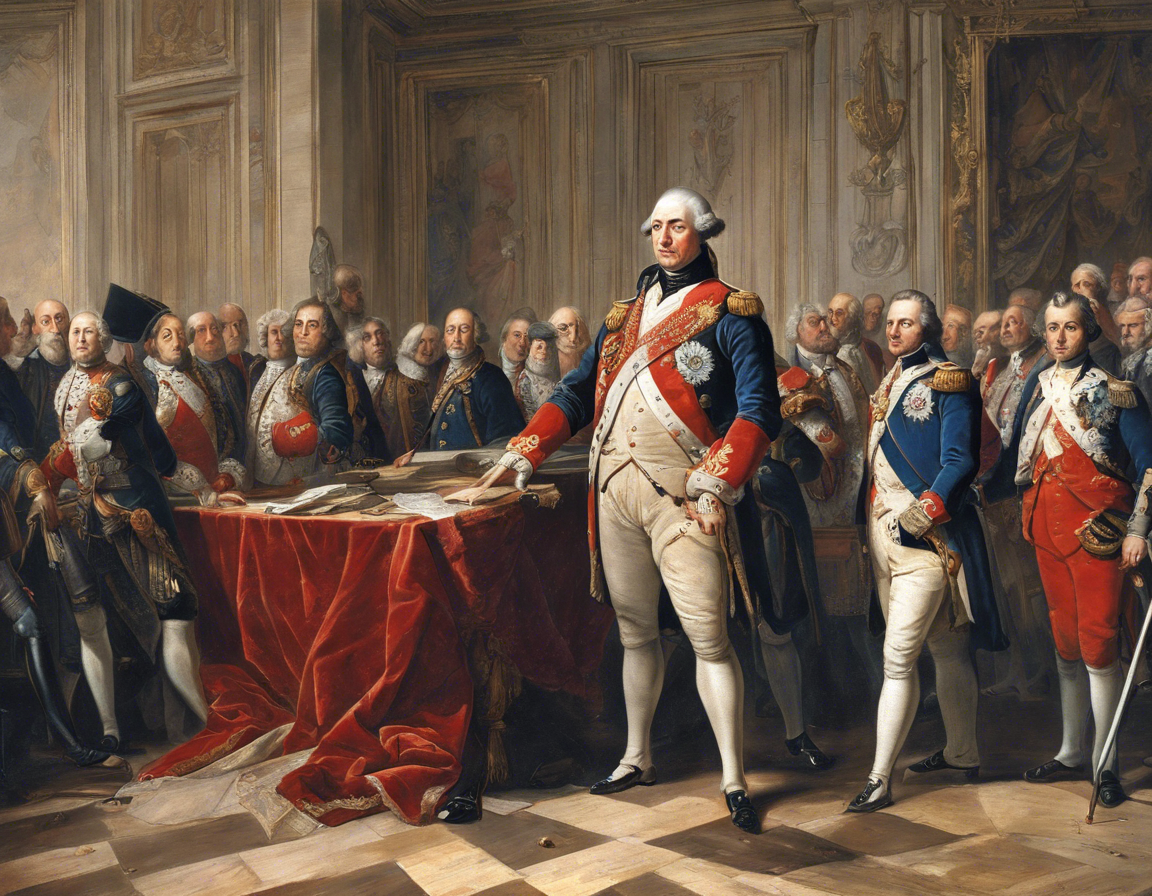France's transition to a constitutional monarchy is a pivotal period in the country's history that marked significant changes in its political landsca
France’s transition to a constitutional monarchy is a pivotal period in the country’s history that marked significant changes in its political landscape. From the absolutist rule of Louis XVI to the establishment of a constitutional monarchy during the French Revolution, this transformation had far-reaching implications not only for France but also for the wider world. In this article, we will delve into the key events, factors, and consequences of France’s transition to a constitutional monarchy, examining the political, social, and economic dynamics that shaped this period.
The Reign of Louis XVI and the Road to Revolution
At the outset of the transition to constitutional monarchy in France, Louis XVI was the reigning monarch. His rule was characterized by extravagance, fiscal mismanagement, and a series of crises that exacerbated the country’s financial woes. The Enlightenment ideas challenging the traditional authority of the monarchy and calling for political and social reforms further fueled discontent among the French populace.
The Estates-General and the National Assembly
As the financial situation worsened, Louis XVI was compelled to convene the Estates-General in May 1789. This representative assembly, comprising the clergy, nobility, and commoners, was tasked with finding a solution to the economic crisis. However, discontent among the commoners, who were underrepresented and faced with pressing grievances, led to the formation of the National Assembly.
The Tennis Court Oath and the Storming of the Bastille
One of the seminal moments in France’s transition to a constitutional monarchy was the Tennis Court Oath on June 20, 1789, when members of the National Assembly pledged to create a new constitution. The subsequent Storming of the Bastille on July 14, 1789, marked the beginning of the French Revolution and the dismantling of the ancien régime.
The Declaration of the Rights of Man and of the Citizen
In August 1789, the National Assembly adopted the Declaration of the Rights of Man and of the Citizen, a foundational document that enshrined principles of liberty, equality, and fraternity. This declaration laid the groundwork for the transformation of France into a constitutional monarchy governed by the rule of law.
The Constitutional Monarchy and the Fall of the Monarchy
The establishment of a constitutional monarchy in France saw the transfer of power from the king to the National Assembly, which functioned as the legislative body. The Constitution of 1791 limited the king’s powers, established a unicameral legislature, and set the stage for a new era of governance based on constitutional principles.
However, the aspirations for a stable constitutional monarchy were short-lived. The escalating tensions between the revolutionaries and counter-revolutionaries, the Flight to Varennes by Louis XVI and Marie Antoinette in 1791, and the influence of external powers contributed to the downfall of the monarchy.
The Rise of the First French Republic
The radicalization of the Revolution, symbolized by the Execution of Louis XVI in January 1793, marked the definitive end of the constitutional monarchy in France. The subsequent Reign of Terror, led by the Committee of Public Safety and the emergence of Napoleon Bonaparte, ultimately led to the establishment of the First French Republic.
Consequences of the Transition to Constitutional Monarchy
The transition to a constitutional monarchy in France had profound consequences for the country and the broader European context. It irrevocably altered the traditional power structures, inspired nationalist movements across Europe, and set the stage for the Napoleonic Wars that reshaped the continent.
Moreover, the ideals of the French Revolution, including liberty, equality, and fraternity, reverberated globally, influencing subsequent struggles for independence, democratization, and human rights. The transition to constitutional monarchy in France thus represents a seminal moment in the history of modern governance and political ideology.
FAQs:
1. What is a constitutional monarchy?
A constitutional monarchy is a form of government in which a monarch acts as the head of state within the parameters of a constitution, with limited powers that are defined and restricted by law.
2. How did the Enlightenment influence the transition to constitutional monarchy in France?
The ideas of the Enlightenment, which emphasized reason, individual rights, and social contract theory, challenged the traditional authority of the monarchy and laid the intellectual groundwork for political and social reforms.
3. What role did the Estates-General play in the transition to constitutional monarchy?
The convening of the Estates-General in 1789 provided the impetus for political reform in France, leading to the formation of the National Assembly and the subsequent events that culminated in the establishment of a constitutional monarchy.
4. What were the key principles enshrined in the Declaration of the Rights of Man and of the Citizen?
The Declaration of the Rights of Man and of the Citizen outlined fundamental rights and principles, including liberty, equality, and property rights, that formed the basis of the constitutional monarchy in France.
5. Why did the constitutional monarchy in France ultimately fail?
The constitutional monarchy in France failed due to a combination of internal conflicts, external pressures, the radicalization of the Revolution, and the inability to reconcile competing political factions, culminating in the abolition of the monarchy and the rise of the First French Republic.


COMMENTS